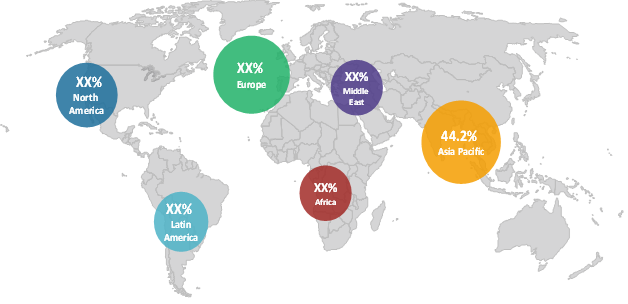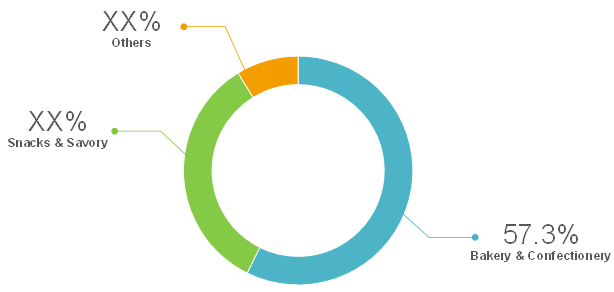Shortenings Market – Insights
Shortening is a product made from animal or vegetable fat. The plant-based shortening segment is expected to gain significant traction during the forecast period, owing to benefits offered by vegetable oil such as high presence of antioxidants. Plant-based shortening is derived from vegetable oils such as soybean oil, palm oil, and rapeseed oil among others.
Shortening is primarily used in the bakery and confectionery industry. Increasing population in Asia Pacific region has resulted in increasing per capita consumption of food, and thereby increased consumption of overall bakery and confectionery products in the region. For instance, according to an analysis of bakery and breakfast cereals products, published by the Agricultural and Agri-food Department of Canada (AAFC), in August 2016, Asia Pacific accounted for a significant share in the global bakery products market, accounting for retail sales of bakery products worth US$ 86,836.7 million in 2015. According to the same source, Japan accounted for US$ 22,982.5 million retail sale of bakery products in 2013, which increased to US$ 23,659.3 million in 2015 and is expected to reach US$ 26,462.4 million by 2020, registering a CAGR of 2.3% during the period 2015 to 2020.
Changing food habits, adoption of convenient food alternatives, development of modern retail and food service industry, and easy availability of raw materials are some of the factors that are expected to drive the Asia Pacific shortenings market growth over the forecast period.
Fat derived from animals or plant sources is the major raw material used in preparation of shortening. It also contains trans-fats, which are considered to be unhealthy as its high consumption can lead to heart-related diseases. For instance, according to article released by U.S Food and Drug Administration FDA on trans-fats in May 2018, trans-fats are formed in food products by process of hydrogenation of vegetable oil, which is a commonly used process to make shortenings. According to the same source, consumption of trans-fat increases the level of low-density lipoproteins cholesterol in the blood, which is considered to be the bad cholesterol, as elevated levels of LDL cholesterol increases the risk of heart diseases, which may lead to death. This scenario is predicted to restraint growth of the global shortenings market over the forecast period.
The global shortenings market was valued at US$ 3,835.2 Mn in 2018, and is expected to register a CAGR of 3.2%, in terms of revenue over the forecast period (2019-2027), to reach US$ 5,051.7 Mn by 2027.
Figure 1. Global Shortenings Market Share (%), By Region, 2018

To learn more about this report, Download Free Sample
Source: Coherent Market Insights, 2018-19
Asia Pacific accounted for the largest revenue share in the global shortenings market in 2018, and is projected to continue its dominance during the forecast period. Expanding confectionery market in Asia Pacific is expected to drive demand for shortening over the forecast period. According to the International Trade Center, in 2017, Singapore generated US$ 364.9 million revenue through export of chocolates, followed by China and Malaysia with US$ 315.6 million and US$ 226 million, respectively.
Moreover, Europe held the second largest position in the global shortenings market and is projected to exhibit a CAGR of 2.3% during 2019-2027. The demand for shortening in Europe is high, owing to growing production of confectionery products. For instance, according to the Association of Chocolate, Biscuits and Confectionery Industries of Europe (CAOBISCO), in 2015, Europe’s chocolate market was pegged at 2,772,325 metric ton, which increased to 2,827,184 metric ton in 2016, witnessing an increase of 1.9% during 2015-16.
Figure 2. Global Shortenings Market Share (%), By Application, 2018

To learn more about this report, Download Free Sample
Source: Coherent Market Insights, 2018-19
Among applications, bakery & confectionery segment contributed for the largest share in terms of the revenue in global shortenings market and contributed 57.3% in 2018 in the global market. Factors such as changing lifestyle and eating habits of consumers, affordability, and convenience coupled with product innovations by key players are expected to benefit the global shortenings market growth in the near future. According to Coherent Market Insights’ analysis, per capita consumption of bakery products in Germany, France, and the U.K. was 85.5 kilograms, 71.5 kilograms, and 47.3 kilograms, respectively, in 2017.
Major players operating in the global shortenings market are Cargill, Incorporated, Archer Daniels Midland Company, Bunge Limited, Wilmar International Ltd., Ventura Foods, Associated British Foods, AAK, and J. M. Smucker Company.
Share
Share
Missing comfort of reading report in your local language? Find your preferred language :
Transform your Strategy with Exclusive Trending Reports :
Select a License Type
Joining thousands of companies around the world committed to making the Excellent Business Solutions.
View All Our Clients